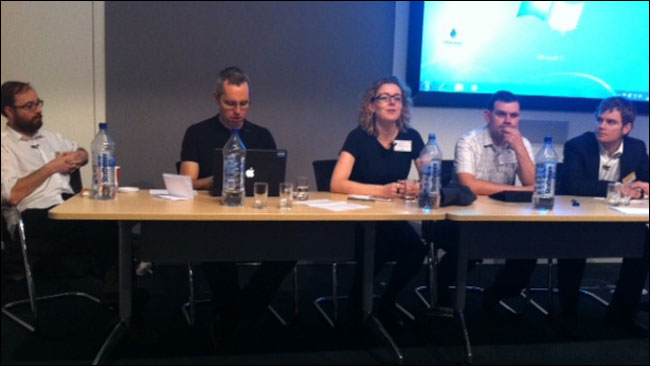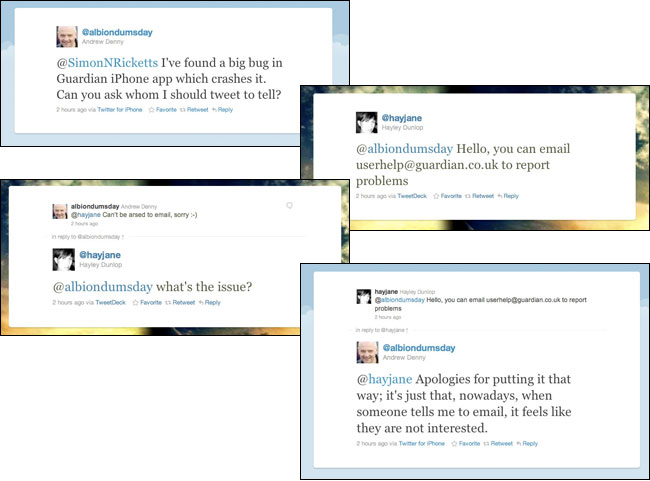news:rewired - “Reader-centred journalism”

A fascinating section in Joanna Geary’s news:rewired keynote last week looked at brand loyalty, and how people happily have tattoos of company and band logos inked onto their bodies, but you never see someone with a masthead tattoo. This is despite the fact that, as she said, ‘taking the newspaper’ used to be about belonging to a tribe, and you’d tend to socialise with people from the same tribe who read the same paper, otherwise, she argued, after a few drinks you’d inevitably end up in a massive row.
The main thrust of her talk was that digitally we should be seeking out these ‘fans’ of our brands, and listening to them, instead of chasing higher and higher numbers of less engaged eyeballs for advertisers.
It seems like Joanna has always had an ear for what the audience might want. She related how in her earliest newspaper jobs she found it odd that the editor set the day’s news agenda, you wrote your stories, and the only real idea you had of whether you had done a good job was whether the editor was pleased. In what sounds like an attempt to do reader-centred journalism years before its time, she had wanted to get the audience more involved back then.
Of course, Joanna is in a fascinating position now, working with a national newspaper community that is behind a paywall. Even in a larger pool, however, it is possible to spot the hyper-engaged users. In my talk I made the point that sometimes your most engaged ‘fans’ can also be your most vocal critics.

The linked data panel at news:rewired - Silver Oliver, Simon Rogers, Kathryn Corrick, Martin Belam, Martin Moore (l-r) (photo courtesy of Dater Miner UK)
I flashed up on screen a post from Tony Hirst’s OUseful blog where he confessed to ‘hassling’ Simon Rogers over the formats of some of the information in the Guardian Datastore.
Tony’s contributions are fantastically useful, and the team have now changed some of their workflows to try and include more universal identifiers. On datasets with country lists, for example, they now aim to provide the two letter ISO country code in order to get around confusion when comparing datasets that might feature Burma or Myanmar for example.
The irony, of course, being that we are only receiving criticism of our data formatting because we are trying to publish so much more data than anyone else in the sector.
In my “No more us and them” talk for World Usability Day I cited another couple of examples of passionate ‘fans’ getting angry at the Guardian, whether it was over changes to the online Crosswords, or a bug in our iPhone app.

I’m an enthusiastic advocate of getting the user involved in the design of digital products. Indeed, I think it is crazy not to. Whether formal lab testing, or more ad hoc guerilla means, talking to your end users always teaches you something about how your products are used and perceived. Why would the news industry think they could do it any differently?
I came away from news:rewired encouraged on that score. Whether it was the games session, looking at the potential future of IPTV, or the online community session, there seemed a genuine understanding in the room that listening to our readers and viewers is vital, and that the era of the passive mass audience is rapidly drawing to a close.